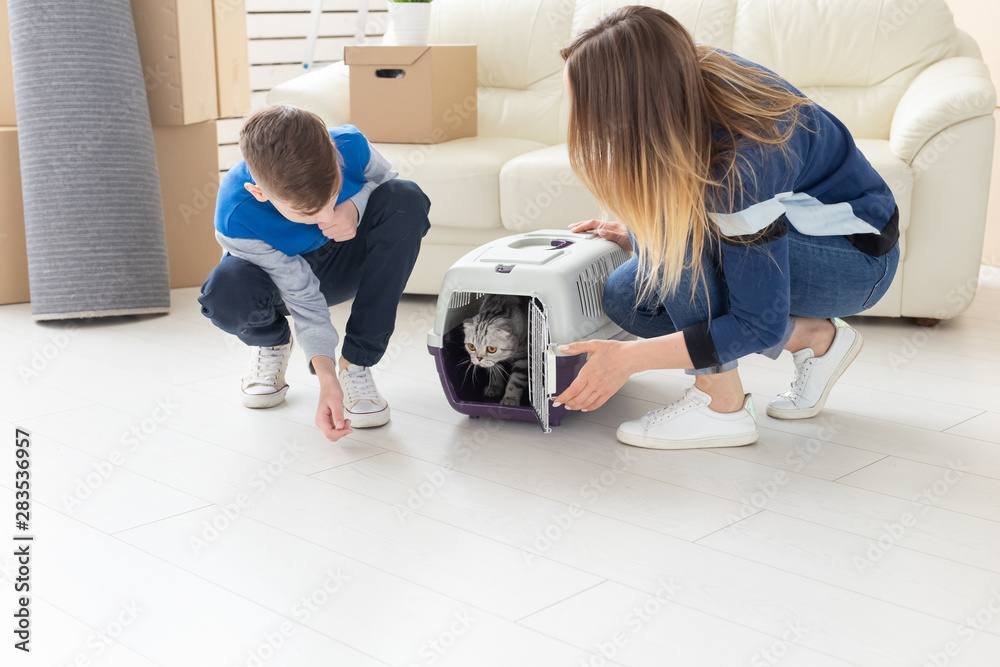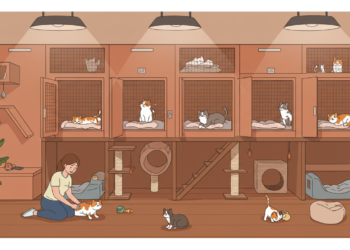Bringing a new cat into your home is an exciting and rewarding experience. However, properly preparing your home is essential to ensure a smooth transition for your feline friend. Whether adopting a rescue or welcoming a Persian kitten, these steps will help create a safe and comfortable environment for your new pet.
The following guide will cover everything from setting up a designated safe space to gathering essential supplies. Following these steps will ensure your new cat adapts quickly and feels right at home.
Creating a Safe Space
Choose a calm, comfortable space for your new pet to feel at ease before bringing them home. This might be a bathroom, an extra bedroom, or just a comfortable nook in your living area. Make sure there are no dangers here, and your cat has a cozy place to hide out if it feels overstimulated.
Benefits of a Safe Space
A safe space helps reduce anxiety and allows your cat to explore their new environment at their own pace. Gradually, your cat will feel more confident and explore the rest of your home.
Gathering the Essentials
Having the right supplies on hand is crucial for a smooth transition. Before your new cat arrives, make sure you have:
- Litter box and litter
- Food and water dishes
- High-quality cat food
- A scratching post
- Comfortable bedding
- Various toys for enrichment

Setting Up the Litter Box
The litter box should be kept apart from your cat’s food and drink in a peaceful, easily accessible area. Ensure that your cat can easily locate and get it. In order to keep the litter box hygienic and promote regular use, clean it frequently. Recall that while some cats could prefer a covered litter box, others might not, so if at all possible, find out what your new cat’s preferences are.
Litter Box Training
After meals and naps, if your cat is new to litter box training, gently lead them to the box. The majority of cats use litter boxes on instinct, but if they need encouragement, patience and positive reinforcement can be helpful.
Preparing a Feeding Area
The locations of your cat’s food and water dishes should be calm areas. Cats enjoy regularity, so try feeding your new pet at the same time every day. Ensure that fresh water is constantly available. Premium cat food options are available to meet your pet’s nutritional needs.
Feeding Tips
When introducing new food, do so gradually to prevent digestive upset. Mix the new food with your cat’s current diet, increasing the proportion over several days until the transition is complete.
Providing Toys and Enrichment
Keeping your cat mentally and physically stimulated is essential for their well-being. Provide a variety of toys, such as balls, feather wands, and interactive puzzles, to encourage play and exercise. Rotate the toys regularly to keep your cat engaged and prevent boredom. Consider purchasing a cat tree or scratching post to satisfy your cat’s demand to climb and scratch.
Environmental Enrichment
Enrich your cat’s environment by offering opportunities for exploration and play. Windows with views of birds and squirrels or a secure outdoor enclosure can provide your cat with endless entertainment. Regularly engaging with your cat through interactive play sessions strengthens your bond and supports their mental health.
Scheduling a Vet Visit
Arrange a vet visit shortly after bringing your new cat home. A thorough check-up ensures your cat is healthy and up-to-date on vaccinations. The vet can also advise on diet, grooming, and preventative care for your cat’s needs. A veterinarian should see to your cat’s health and wellbeing on a regular basis.
Final Tips for a Smooth Transition
When welcoming a new cat into your home, patience is essential. Respect your cat’s desire for space and let them explore on their own. Stress and confrontations can be avoided by introducing family members and other pets gradually. Build trust and deepen your relationship with your cat by spending quality time with them every day. Show them affection and attention.
Monitoring Progress
Keep an eye on your cat’s health and behavior in the initial weeks. Keep an eye out for indicators of stress, such as hiding, losing weight, or altering litter box habits. See your veterinarian right away if you have any concerns to protect your cat’s health.









